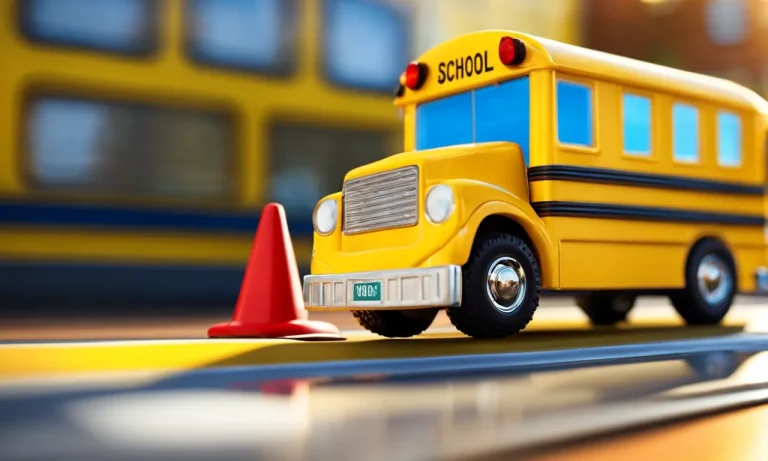The debate over year round versus traditional school calendars has been going on for decades. Parents, teachers, and school administrators all have strong opinions on the matter. If you’re wondering whether year round school is really better for students, the short answer is no.
Year round schooling has some benefits, but there are many drawbacks that make it a less than ideal solution.
In this comprehensive guide, we will examine the pros and cons of year round school calendars and explain why it ends up being a bad idea overall. We will look at the potential academic benefits and challenges, impacts on families, effects on teachers, and other considerations.
After reviewing all the evidence, the conclusion is clear: sticking with the traditional school calendar is best for students, teachers, and families.
The Potential Academic Benefits of Year Round School
While there are valid concerns about year-round school systems, it is important to consider the potential academic benefits that this alternative schedule can offer to students. Here are some reasons why some educators and parents believe year-round schooling can be advantageous:
More Continuous Learning
One of the main benefits of year-round school is that it offers a more continuous learning experience for students. Instead of having long summer breaks where knowledge can be lost, students have shorter breaks throughout the year.
This allows for a smoother transition between grade levels and prevents students from forgetting what they have learned.
According to a meta-analysis published in the Campbell Systematic Reviews, students can lose up to two months of math and reading skills over the summer break. Year-round schooling can help mitigate this learning loss by providing regular academic engagement and reinforcement throughout the year.
View this post on Instagram
Less Knowledge Loss Over Summer
Year-round schooling can significantly reduce the amount of knowledge loss that typically occurs during the long summer break. Without regular academic stimulation, students often experience a “summer slide” where they forget important concepts and skills.
This can lead to a slower start to the new school year and the need for extensive review.
By implementing a year-round school schedule, students have shorter breaks and are more likely to retain what they have learned. This can lead to a smoother transition between grade levels and a more efficient use of instructional time.
Extra Learning Opportunities
Another advantage of year-round schooling is that it provides additional opportunities for students to engage in learning outside of the traditional classroom setting. With shorter breaks, students have more time for enrichment activities, such as summer camps, internships, and community service.
These extracurricular experiences can enhance students’ overall educational experience and help them develop important life skills. Additionally, year-round schooling allows for a more flexible schedule, which can accommodate students who need to work or pursue other interests during their breaks.
While it is important to consider the potential academic benefits of year-round schooling, it is crucial to acknowledge that every student and school system is unique. What works well for some may not work for others.
It is essential for educators, parents, and policymakers to carefully weigh the pros and cons before making any decisions regarding the implementation of year-round schooling.
The Academic Challenges of Year Round Schools
Year round schools, a system where students have shorter breaks throughout the year instead of one long summer break, present several academic challenges that need to be considered. These challenges can have a significant impact on students’ learning experiences and overall academic performance.
Learning Disruptions From Frequent Breaks
One of the main challenges of year round schools is the increased frequency of breaks throughout the year. While some may argue that shorter breaks provide students with more opportunities for rest and rejuvenation, the reality is that these frequent interruptions can disrupt the learning process.
When students are constantly transitioning from learning mode to vacation mode, it becomes difficult for them to maintain a consistent focus and momentum in their studies. This can result in a loss of productivity and hinder their ability to effectively grasp and retain new information.
According to a study from the Journal of Urban Economics, the frequent breaks in year round schools can lead to a decrease in academic achievement. The study found that students in year round schools scored lower on standardized tests compared to their counterparts in traditional schools with longer summer breaks.
View this post on Instagram
Harder for Students to Retain Knowledge
Another challenge of year round schools is the difficulty students face in retaining knowledge. Traditional schools typically have a longer summer break, which allows students to have a period of uninterrupted time to review and reinforce what they have learned throughout the year.
However, in year round schools, the shorter breaks may not provide students with enough time to fully consolidate their learning.
Research has shown that spacing out learning sessions over time enhances long-term retention. When students have longer breaks, they have the opportunity to revisit and reinforce their knowledge, leading to better retention.
This is especially crucial for subjects that require a deep understanding and mastery, such as mathematics and science.
Difficulty Measuring Academic Impact
Measuring the academic impact of year round schools can be a challenge. Traditional schools typically have standardized schedules and academic calendars, making it easier to track and compare academic performance.
However, year round schools often have different schedules and breaks, which can make it difficult to evaluate their effectiveness.
Furthermore, it can be challenging to isolate the impact of year round schooling on academic performance from other factors that may influence student achievement, such as teaching quality and student demographics.
This lack of standardized data and evaluation methods makes it harder to assess whether year round schools are truly improving students’ academic outcomes.
While year round schools may have some benefits, such as reducing academic regression over long breaks, it is important to consider the academic challenges they present. The learning disruptions caused by frequent breaks, the difficulty students face in retaining knowledge, and the challenges in measuring academic impact all contribute to the argument that year round schools may not be the most effective educational model.
Negative Impacts of Year Round School on Families
Year-round school schedules have been implemented in some educational systems as a way to improve academic performance and reduce learning gaps. However, this alternative school calendar can have negative impacts on families, affecting their quality of life and overall well-being.
Here are some of the main concerns families have regarding year-round school:
Family Vacations and Travel Disrupted
One of the biggest drawbacks of year-round school is the disruption it causes to family vacations and travel plans. With the traditional school schedule, families have the opportunity to plan and enjoy extended vacations during the summer break.
This allows for quality time spent together, creating lasting memories. However, with year-round school, these long breaks are eliminated or significantly shortened, making it challenging for families to coordinate time off and plan vacations.
According to a survey conducted by the American Automobile Association (AAA), 100 million Americans or four in 10 U.S. adults planned to take family vacation in 2019. Families consider summer vacation to be an important time for bonding and creating family traditions. The lack of a substantial summer break due to year-round school can lead to a sense of loss and disappointment for families who value this time together.
Childcare Complications
Another concern for families with year-round school is the increased difficulty in coordinating childcare. During the traditional school calendar, many parents rely on summer camps, recreational programs, or family members to care for their children while they are at work.
However, with year-round school, these options become more limited or non-existent during the shorter breaks throughout the year.
A study conducted by the National Association for the Education of Young Children (NAEYC) found that the lack of affordable and available childcare during intersession breaks can cause stress and financial burden for families.
This can be especially challenging for parents who do not have the flexibility to take time off work or have limited resources to secure alternative childcare arrangements.
Burnout from Lack of Long Break
Extended breaks, such as the summer vacation, provide students and families with valuable time to recharge and rejuvenate. These breaks allow children to explore their interests, engage in extracurricular activities, and simply relax.
With year-round school, students are often deprived of this much-needed downtime, which can lead to burnout and decreased motivation.
Students who have regular breaks throughout the year instead of a long summer break may experience higher levels of stress and fatigue. This can negatively impact their academic performance and overall well-being.
Effects of Year Round School on Teachers
Teacher Burnout and Fatigue
One of the major concerns regarding year-round schools is the increased risk of teacher burnout and fatigue. While the intention behind year-round schooling is to distribute breaks throughout the year, it can actually lead to teachers feeling overwhelmed and exhausted.
Without a significant summer break to recharge and rejuvenate, teachers may find it challenging to maintain their energy and enthusiasm in the classroom. This can ultimately impact their performance and ability to effectively teach their students.
Recruitment and Retention Problems
Year-round schools may also face recruitment and retention issues when it comes to attracting and keeping qualified teachers. The demanding schedule of year-round schooling may deter potential educators from pursuing a career in teaching.
Additionally, teachers who are already in the profession may choose to leave year-round schools in search of traditional academic calendars that provide longer summer breaks. This turnover can disrupt the continuity in education and have a negative impact on student learning.
Lack of Time for Professional Development
Teachers rely on professional development opportunities to enhance their teaching skills and stay up-to-date with the latest educational advancements. However, year-round schools often have limited time for professional development due to the shortened breaks.
This lack of time can hinder teachers’ ability to grow and improve as educators. Without access to ongoing training and development, teachers may struggle to implement innovative teaching strategies and adapt to changes in the education field.
It is important to acknowledge that these effects on teachers can vary depending on the specific implementation and structure of year-round schooling. However, it is crucial for education policymakers to carefully consider the potential negative consequences on teachers before implementing year-round school schedules.
Other Considerations
Higher Costs
One major drawback of year-round school is the potential for higher costs. Implementing a year-round schedule requires additional funding for things like utilities, transportation, and maintenance. Schools may need to hire additional staff or extend the hours of existing staff to accommodate the increased workload.
View this post on Instagram
Facility Usage Challenges
Another consideration when it comes to year-round school is the challenge of facility usage. Traditional school buildings are designed to accommodate a specific number of students during a specific time frame. With a year-round schedule, schools may struggle to effectively utilize their facilities.
This can lead to overcrowding during certain periods and underutilization during others. Schools may need to invest in additional classroom space or renovate existing buildings to address these challenges.
The cost and logistics of adjusting facilities to accommodate a year-round schedule can be significant.
Social Drawbacks
Year-round school can also have social drawbacks for students. One of the benefits of traditional summer breaks is the opportunity for children to engage in extracurricular activities, such as sports, camps, and family vacations.
These activities provide valuable opportunities for socialization, personal growth, and relaxation. With a year-round schedule, students may have limited time for these activities, which could impact their overall well-being and development.
It is important to consider the social and emotional needs of students when evaluating the feasibility of year-round schooling.
Conclusion
While year round schooling does have some potential benefits, the drawbacks outweigh the advantages when you look at the full picture. The frequent breaks disrupt learning and retention for students. Families struggle to manage vacations and childcare with a modified calendar.
Teachers face burnout without an adequate long summer break for rejuvenation. When you add in the higher costs and other logistical challenges, it becomes clear that switching to year round school is not worth the costs.
The traditional school calendar with a long summer break may not be perfect, but it works better for students, teachers, and families overall. Instead of an overly complicated schedule, schools should focus on improving the quality of instruction and adding summer academic programs to help students who are falling behind.
With some creative solutions, we can work within the traditional calendar to boost learning rather than disrupting the entire system. So in the debate over school calendars, the evidence firmly supports sticking with the status quo.






